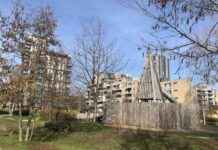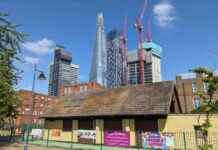In the bustling city of London, the idea of creating a new town may seem like a far-fetched notion at first glance. However, when considering the pressing housing crisis gripping the city, the abundance of designated Green Belt land, and the proven track record of London government in managing large-scale projects, the concept begins to take shape as a plausible solution.
A recent report by BusinessLDN, spearheaded by Jonathan Seager in collaboration with renowned planning and infrastructure firms, advocates for London to host at least one of the government’s proposed New Town communities. These communities are envisioned to encompass a minimum of 10,000 homes, boasting connectivity, design excellence, and an overall pleasant living environment. London, with its rich tapestry of urban planning expertise, seems poised to rise to the occasion.
Seager underscores the monumental challenge of constructing a New Town from scratch, emphasizing the multifaceted nature of such an endeavor. It extends beyond mere housing construction to encompass critical components like infrastructure, employment opportunities, and community development. The intricate process of weaving these elements together remains a puzzle yet to be solved.
One of the pivotal aspects of a potential London New Town would be the inclusion of a significant proportion of affordable housing units. Amidst the government’s ambitious targets for new dwellings in London and the prevailing market conditions, the role of private developers looms large. However, Seager highlights the necessity of public sector support to catalyze private investments and ensure the delivery of affordable housing options for low and middle-income Londoners.
As the government prepares for its forthcoming spending review, speculations arise about the potential inclusion of an expanded Afford Homes Programme, which could potentially align with a London New Town initiative. Such coordinated efforts could pave the way for a comprehensive approach to investment, encompassing all essential facets of a successful development project.
The idea of establishing Mayoral Development Corporations (MDCs) emerges as a strategic move to streamline the planning and execution process for large-scale projects. With the precedence set by existing MDCs overseeing key areas like the Olympic Park and Old Oak Park Royal, the creation of a new MDC for a prospective London New Town appears to be a viable path forward.
Moreover, the concept of what constitutes a New Town in the context of London remains open to interpretation. While the government’s taskforce envisions a blend of new communities and urban extensions, Seager underscores the flexibility inherent in defining a New Town. Whether through urban regeneration schemes, grey belt extensions, or large-scale urban developments, the possibilities for a London New Town are diverse and promising.
In the midst of speculations and rumors surrounding potential locations for a London New Town, the city’s unique powers and structures position it as a trailblazer for innovative urban development. With outer London boroughs expressing interest and developers eyeing new opportunities, the stage is set for London to pioneer a transformative approach to addressing its housing crisis and fostering sustainable growth.
As the dialogue continues to unfold, the prospect of a London New Town remains both tantalizing and challenging. With the expertise of key stakeholders and the support of public and private sectors, the vision of a vibrant, well-connected community within the heart of London may soon become a tangible reality. The journey towards creating a new town within a bustling metropolis beckons, calling for bold initiatives and collaborative efforts to shape the future of urban living in the capital.





















